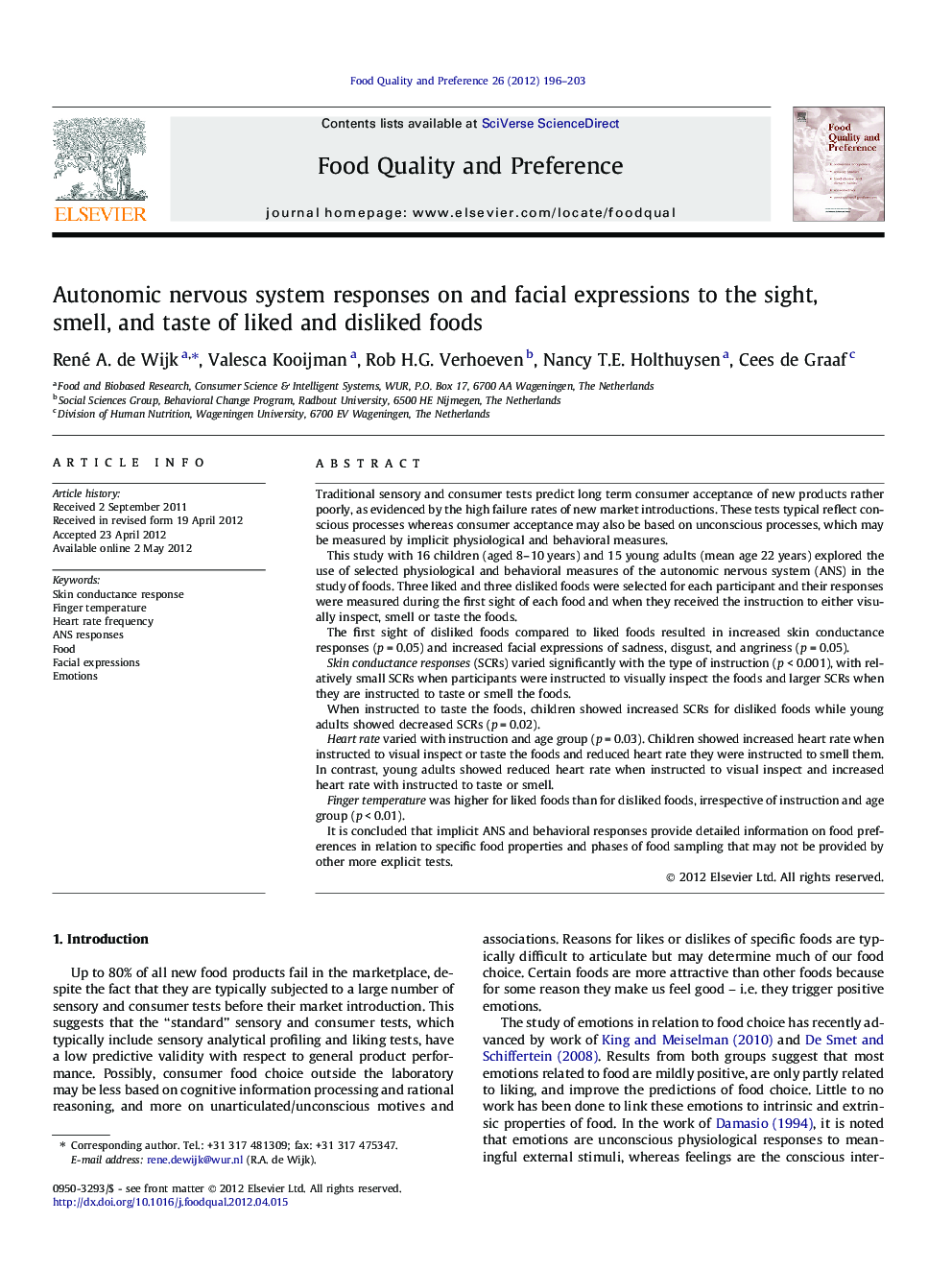| Article ID | Journal | Published Year | Pages | File Type |
|---|---|---|---|---|
| 4317468 | Food Quality and Preference | 2012 | 8 Pages |
Traditional sensory and consumer tests predict long term consumer acceptance of new products rather poorly, as evidenced by the high failure rates of new market introductions. These tests typical reflect conscious processes whereas consumer acceptance may also be based on unconscious processes, which may be measured by implicit physiological and behavioral measures.This study with 16 children (aged 8–10 years) and 15 young adults (mean age 22 years) explored the use of selected physiological and behavioral measures of the autonomic nervous system (ANS) in the study of foods. Three liked and three disliked foods were selected for each participant and their responses were measured during the first sight of each food and when they received the instruction to either visually inspect, smell or taste the foods.The first sight of disliked foods compared to liked foods resulted in increased skin conductance responses (p = 0.05) and increased facial expressions of sadness, disgust, and angriness (p = 0.05).Skin conductance responses (SCRs) varied significantly with the type of instruction (p < 0.001), with relatively small SCRs when participants were instructed to visually inspect the foods and larger SCRs when they are instructed to taste or smell the foods.When instructed to taste the foods, children showed increased SCRs for disliked foods while young adults showed decreased SCRs (p = 0.02).Heart rate varied with instruction and age group (p = 0.03). Children showed increased heart rate when instructed to visual inspect or taste the foods and reduced heart rate they were instructed to smell them. In contrast, young adults showed reduced heart rate when instructed to visual inspect and increased heart rate with instructed to taste or smell.Finger temperature was higher for liked foods than for disliked foods, irrespective of instruction and age group (p < 0.01).It is concluded that implicit ANS and behavioral responses provide detailed information on food preferences in relation to specific food properties and phases of food sampling that may not be provided by other more explicit tests.
► ANS (HR, SCR, FT, facial expressions) responses were recorded for foods. ► ANS patterns to disliked foods were associated with negative emotions. ► ANS patterns to liked foods were associated with positive emotions. ► ANS patterns varied with phases of food sampling (first sight, smelling, tasting). ► ANS responses varied with age group.
